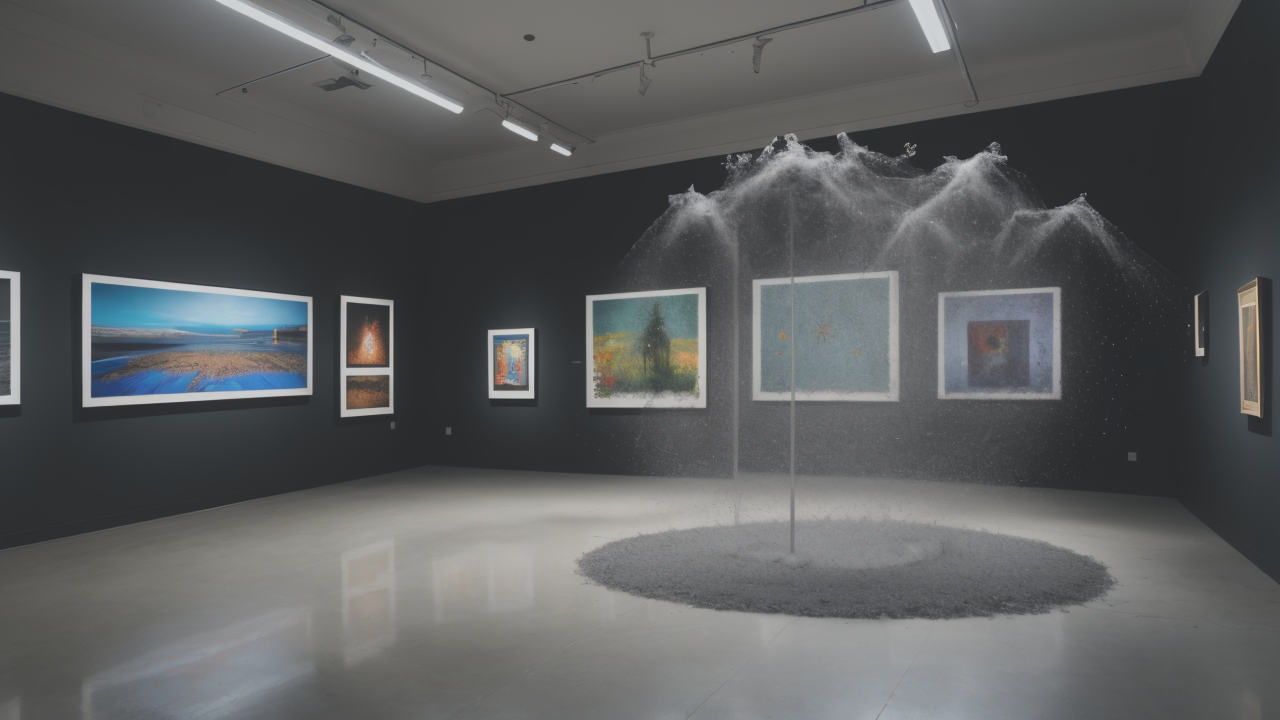
Exploring the Intersection of Pop Arte and Contemporary Minimalism in American Art
The Evolution of Pop Arte: A Retrospective and Contemporary Minimalism Trends
The Origins of Pop Arte in the United States
Pop Arte emerged in the 1950s as a reaction to Abstract Expressionism. It drew inspiration from popular culture and mass media. Artists like Andy Warhol and Roy Lichtenstein led this movement. They used bold colors and familiar images from ads and comics. Pop Arte challenged the idea of high art. It blurred the lines between fine art and everyday objects. This style reflected the growing consumer culture in America. It also commented on the mass production of goods and images. Pop Arte's influence spread quickly across the country. It became a defining style of the 1960s American art scene.

The Rise of Minimalism in American Art
Minimalism gained popularity in the 1960s and 1970s. It was a stark contrast to the colorful and busy Pop Arte. Minimalist artists focused on simplicity and geometric forms. They used industrial materials and repeated elements. Artists like Donald Judd and Frank Stella were key figures. Minimalism rejected traditional art techniques. It emphasized the viewer's experience of the artwork. This style often used large-scale installations. Minimalism aimed to create a pure, uncluttered aesthetic. It influenced architecture and design as well as fine art. The movement challenged viewers to find meaning in simple forms.
Pop Arte's Influence on Modern Minimalism
Pop Arte and Minimalism may seem opposites, but they share common ground. Both movements challenged traditional art forms. They also questioned the role of the artist. Pop Arte's bold simplicity influenced Minimalist design. Minimalism's focus on essential elements echoed in later Pop Arte works. Artists began combining elements from both styles. This fusion created a new aesthetic in American art. It balanced bold imagery with clean, simple designs. The intersection of these styles continues to inspire contemporary artists. It shows that seemingly opposite movements can complement each other.
Pop Arte and Contemporary Minimalism in the American Art Scene
Key Artists Bridging the Gap Between Pop Arte and Minimalism
Several artists have successfully merged Pop Arte and Minimalism. Jeff Koons is known for his large, shiny sculptures. They combine Pop imagery with Minimalist forms. Takashi Murakami blends Japanese pop culture with Minimalist techniques. His work is both playful and refined. Barbara Kruger uses bold text and images in a Minimalist layout. She creates powerful social commentary. These artists show how the two styles can work together. They create art that is both accessible and thought-provoking. Their work appeals to a wide audience while maintaining artistic depth.

Exhibitions and Installations Combining Pop Arte and Minimalist Elements
Museums and galleries are embracing the blend of Pop Arte and Minimalism. Recent exhibitions have showcased this fusion. The Museum of Modern Art held a show called "The Forever Now". It featured artists mixing various styles, including Pop and Minimalism. Art Basel has seen installations that combine bold Pop images with Minimalist spaces. These exhibits challenge viewers' perceptions of art movements. They show how different styles can coexist and enhance each other. Such shows are redefining the boundaries of contemporary art.
The Role of Technology and Media in Pop Arte and Minimalism
Technology has greatly influenced both Pop Arte and Minimalism. Digital tools allow for precise Minimalist designs. They also enable the mass production of Pop Arte-style images. Social media platforms have become new canvases for these art forms. Artists use Instagram to share Minimalist compositions. They create Pop Arte-inspired memes that spread rapidly online. Virtual reality is opening new possibilities for immersive art experiences. It allows artists to create minimalist spaces filled with pop culture elements. This blend of tech and art is pushing the boundaries of both movements.
The Future of Art in the United States: Pop Arte and Minimalism
Predicting the Next Wave in American Art
The future of American art likely involves further blending of styles. We may see more interactive installations combining Pop and Minimalist elements. Virtual and augmented reality could create new forms of Pop Arte in minimalist spaces. Environmental concerns might lead to sustainable Pop Arte using minimalist techniques. The line between art and everyday life may continue to blur. This could result in more public art that mixes both styles. The next wave might also include more diverse voices in these art forms.

The Impact of Social Media and Online Communities
Social media is reshaping how we create and consume art. It allows artists to share their work instantly with a global audience. This has led to new forms of Pop Arte that react to current events. Minimalist designs thrive on platforms like Pinterest and Instagram. Online communities discuss and critique art in real-time. This instant feedback influences artistic trends. It also allows for collaborative art projects across distances. Social media is democratizing art, making it more accessible to everyone. This could lead to new hybrid forms of Pop Arte and Minimalism.
How Pop Arte and Minimalism Are Shaping Art Education and Curatorial Trends
Art schools are adapting their curricula to include both Pop Arte and Minimalism. Students learn to balance bold expression with refined simplicity. This prepares them for a diverse art market. Curators are creating more dynamic exhibitions. They mix different styles to create engaging experiences. Museums are using technology to enhance art appreciation. This includes apps that provide context for Pop Arte and Minimalist works. Art education is becoming more interdisciplinary. It reflects the blending of styles in contemporary art. These trends are shaping a new generation of artists and art lovers.


